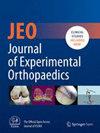Treatment options for irreparable rotator cuff tears (IRCTs) remain controversial and include superior capsular reconstruction (SCR), lower trapezius tendon transfer (LTTT), subacromial balloon spacer (SABS), and reverse shoulder arthroplasty (RSA). Despite reports of positive treatment responses with all approaches, the relative clinical benefit in the context of associated cost has not been well delineated. The purpose of this study was to determine the most cost-effective treatment strategy among SCR, LTTT, SABS, and RSA for patients with massive IRCTs.
A Markov Chain Monte Carlo probabilistic model was developed to evaluate the outcomes and costs of 1000 simulated patients undergoing either SCR, LTTT, SABS, or RSA for massive IRCTs. Upfront costs, health utility values, and reoperation rates including revisions and conversion to RSA were derived from the published literature. Outcome measures included costs, quality-adjusted life years (QALYs), and the incremental cost-effectiveness ratio (ICER).
Mean total costs of SCR, RSA, LTTT, and SABS were $30,540 ± 5,770, $26,896 ± 5,622, $25,819 ± 4,325, and $16,412 ± 2,583, respectively. On average, total QALYs from SCR, RSA, LTTT, and SABS were 6.17 ± 0.53, 3.78 ± 0.38, 5.33 ± 0.49, and 5.59 ± 0.48. Overall, SCR was determined the preferred, most cost-effective strategy in 60% of patients included in the microsimulation model, with SABS the optimal strategy in 31% of cases and LTTT the optimal strategy in 9% of cases.
SCR was found to be the most cost-effective treatment option for IRCTs based on the current microsimulation and probabilistic sensitivity analyses, although LTTT and SABS were also found to be cost-effective in select patients. Given that this statistical model does not consider the unique experiences of individual patients, shared decision-making remains an important component in determining the optimal treatment strategy for IRCTs.
Level III, economic decision model.



